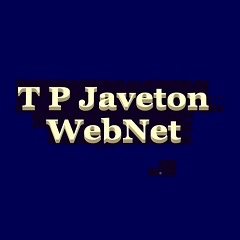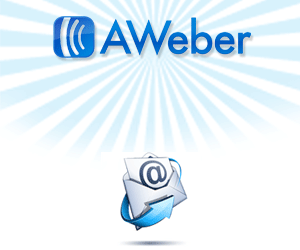Meet the guest writer
Today’s post is brought to you by our esteemed friend at the Copywriter’s Rountable. So without further ado, here are the words of Copywriter, John Forde…
I guess first I should define terms…
“A swipe file is a collection of tested and proven advertising and sales letters. Keeping a swipe file (templates) is a common practice used by advertising copywriters and creative directors as a ready reference of ideas for projects.
“Copywriters are not the only ones who can benefit from having a swipe file. As book publishing coach Diane Eble points out, authors and publishers can benefit from creating a swipe file of best-selling titles to give them ideas for their own titles.
“Publicists can create a swipe file of great press release headlines. Swipe files are a great jumping-off point for anybody who needs to come up with lots of ideas. Swipe files are also commonly used by Internet Marketers who need to gather a lot of resources not only about products but also about marketing methods and strategies.”
Well, that clarifies things a little, yes? Try this, too…
“There is nothing better or more productive a copywriter can do – and this applies to experienced copywriters as well as novices – than to read (almost to the point of memorizing) the best work of their fellow writers.” The first is just from Wikipedia, and not so much swiped but copied and pasted. The second from my old friend and mentor, as well as master copywriter, Michael Masterson.
Okay, now it’s my turn to try my hand at an original thought…
A swipe file defined
A swipe file is that place where you store those dazzling promo pieces that not only worked… but that are so good they make you sick with envy. Because you wish you’d written them yourself. In other terms, it’s the stack of stuff you go through, to help jump-start your creative engine… because you know that most everything you’re looking at, in those “swiped” samples, is something that worked.
Back in my earliest days, my swipe file filled a green milk grate. And then another. And then seven or eight more, until somebody made me get a filing cabinet. And then a second filing cabinet.
These days, thank merciful God for the Internet. Because now my swipe file — and yes, I still keep one — is a folder on my desktop labeled “Promos to Study.” In it lands links to VSLs, PDFs of magalogs somebody else has generously scanned, black and white ad clips the ‘70s and ‘60s, even back to the 1920s (thanks to the excellent InfoMarketingBlog.com), covers and screen captures I’ve used in presentations, and more.
Thanks, merciful Zeus as much or more for the iPad, which I also use every morning to markup whatever promo I’ve set aside to review.
The way it goes, most mornings, is that I load up any oft-seen sales letter that comes with a transcript. Then I “print” it to a PDF that gets stored on my iCloud account. From there, I open an app called “Goodnotes” and import the file, where it gets circled, scribbled upon, and partitioned into what seem the best bits. And yes, I do try to do that daily. More so now than before. And yes, it’s eye-opening. Every time.
But the real reason I’m writing this… or rather, updating this old CR classic… is because I recently got a question from a CR reader about where and how to swipe from other sales letters. So I thought I would go ahead and provide some answers. And away we go, starting with…
Reach wide. No easy answers
1) Reach wide – Before you can “read” the secrets buried in a swipe file, you need to fill it. And when you do, naturally you’ll want to start with the kinds of ads you expect to write most yourself. But don’t stop there. Reach way back to the classics. You’ll be surprised what Claude Hopkins and John Caples ads, Ogilvy, Schwartz and others still have to teach.
If you’re lucky enough to have the courier typed sales letters of the ‘70s and ‘80s… or magalogs and bookalogs of the ‘90s… read them too. Almost everything we know works now, they knew then times ten. And then, yes, do keep it current with the working VSLs. Just make sure you click and get the “transcript” where it’s offered too. Print it to a PDF. Some of the copywriters today do some of the most enviably good stuff I’ve seen yet, anywhere.
2) Don’t expect easy answers – What’s the right question to ask for any piece of copy you’re about to study? Assuming you’re only studying stuff that worked, the right opener — obviously — is “Why?” Unfortunately, it’s also the most unanswerable question. You won’t know, for sure, why anything worked. Because it will always remain a guess.
3) Look past the copy – That is, remember that it’s not so much that the copywriter sold something well… as that there were lots of readers out there that wanted to receive the message he used to sell it. What’s the distinction?
The twist & style
When you look at swipes, especially the most current ones in your market, what you’re looking for first is every clue you can get about the prospect, not so much the product. If there’s a promise that you see working everywhere, it’s because it promises to fix a problem that’s keeping target readers everywhere up at night. Isolate the single biggest promise the copy makes and flip it — what problem is it solving?
4) Find the twist – More and more, we see copy make a promise or throw out a solution-demanding premise… and then up the ante with an extra “twist” to the message. That is, a kind of early “but it gets [an] even better” or “gets [an] even worse” turn in the message, just at the moment the reader was thinking “I’m kinda hooked already…”
Of course, this is classic storytelling. Our hero struggles. And just at the moment you thought it couldn’t get any worse… or better… the drama dial clicks up another notch. Just about any sales message could benefit from a twist, both in the lead and the close. Look to your swipes to see how it’s done.
5) Soak up the style – All writers in all genres pick up a style. Dense. Lean. Even. Excitable. Some copy drips with adjectives but works in spite of itself. Other copy undersells, yet manages — somehow — to hit hard. This is one of those things you can absorb best by just copying out a good piece of copy a few times until the secrets of style sneak into your subconscious.
Structure & closings
Even now, I keep a piece of the latest, greatest copy open on my screen or a second desktop (on the Mac, at least, you can move between multiple desktops). When I’m stuck, I swipe over to it and read for a little, then come back and try to trot out my message in the same mindset. Be careful here, because you’re not stealing words. At least, not mindlessly so. You’re trying to get a “feel” you can transfer back to your writing.
6) Study the structure – This is something else that writing out a full promo — by hand — can help you do. If not that, at least try to re-outline a finished copy control. You want to see how long they took to get through the lead, where they first started laying out the benefits or naming the offer, how they packaged up the testimonials and how long they spent on proof.
Build your own library of promo outlines and use them as templates, next time you’re getting started. This isn’t stealing. It’s just good sense.
Also, look for the segments that seem to show up across several different samples. Just about every sales piece, for instance, is going to have testimonials and a close and some freebies with the offer.
But do all promotions have “Imagine this outcome” sections, transcendent mission statements, a personal story, show-me-the-money examples, etc.? Probably.
7) Collect closes – Copywriters sure do love to talk about headlines and leads. And with good reason, of course. It’s where we put flame to powder. Still, if the lead is what sparks prospect interest, the close is where we pile up the dynamite. And you’ve got to pile it up just so if you want the right result.
Let the swiping begin!
It’s worth pulling closes from a lot of working promos and studying just those, one next to the other. A little tweak to your guarantee, your price rationalization, your push for urgency, can make a huge difference in your results.
Hope that helps… now get swiping!





